archaeology
Latest

Researchers sequenced the genome of one of Pompeii’s ancient inhabitants
Thanks to the latest advances in DNA sequencing technology, we now know more about one of Pompeii's residents.
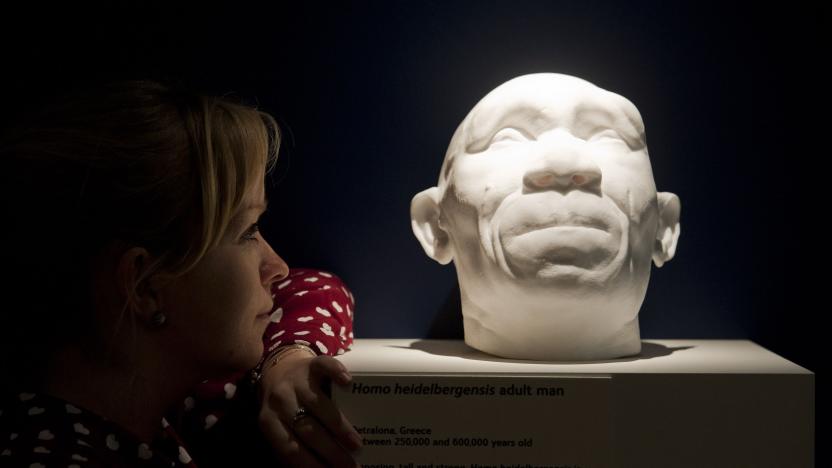
Supercomputer simulations show climate change’s role in early human migration
A research team from South Korea's Pusan National University, revealed research Wednesday that suggests a link between modern humanity's evolution and changes in prehistoric weather.
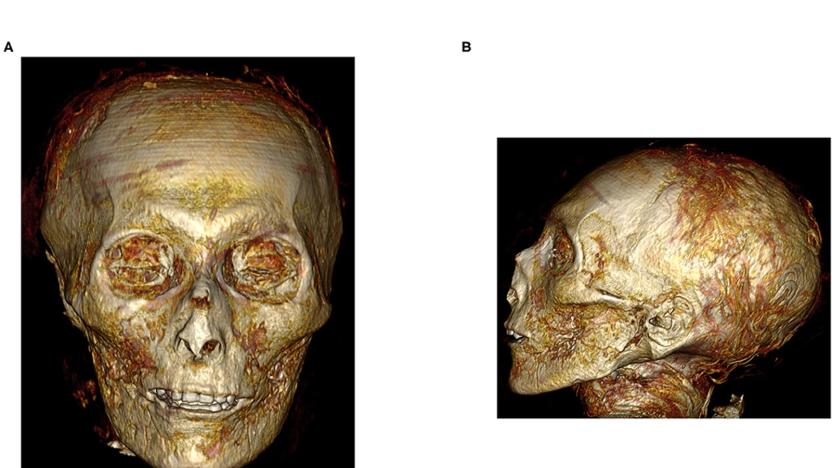
Researchers used CT scans to virtually unwrap a pristine mummy
The scans helped researchers learn new details about Egypt's 18th Dynasty.
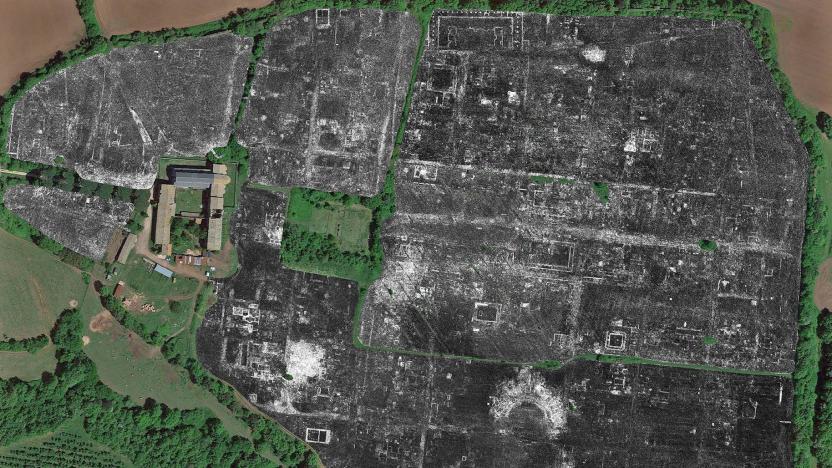
Archaeologists map an ancient Roman city without any digging
For the first time, archaeologists have mapped an entire ancient Roman city without any digging by using ground-penetrating radar (GPR) technology (via Gizmodo). The team of archaeologists from Cambridge and Ghent Universities used the technique to scan Falerii Novi, about 30 miles north of Rome.
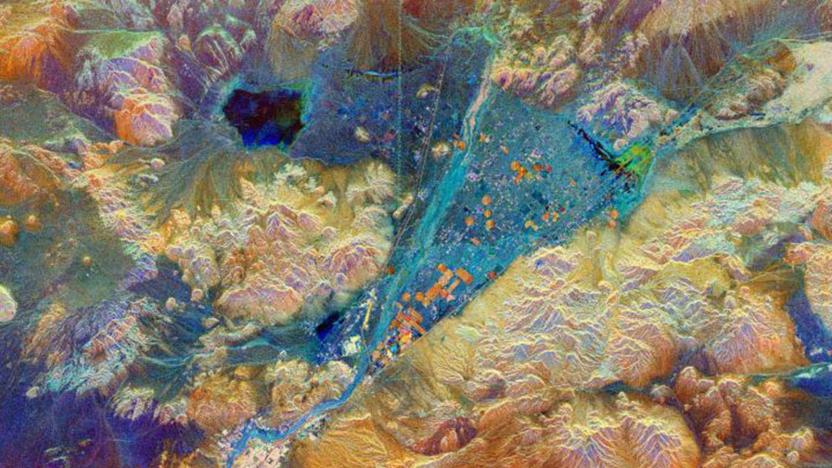
Hitting the Books: Searching for ancient cities from space
Welcome to Hitting the Books. With less than one in five Americans reading just for fun these days, we've done the hard work for you by scouring the internet for the most interesting, thought provoking books on science and technology we can find and delivering an easily digestible nugget of their stories.

1960s aerial spy photos reveal hidden archaeological sites
Archaeologists use satellite photos to spot potential archaeological sites, but urban sprawl and other human development has erased many traces of ancient civilizations. To get around that, Harvard's Jason Urs and Emily Hammer from the University of Pennsylvania figured out how to effectively go back in time to when the land was less despoiled. They dug up and archived a trove of U-2 spy photos from the '50s and '60s, eventually finding ancient canals and "desert kite" stone structures built in northern Iraq by the Assyrians up to 8,000 years ago.

Ancient city's LiDAR scans reveal as many buildings as Manhattan
When researchers surveyed the ruins of a Purépecha Empire city in Mexico the old-fashioned way a decade ago, it took them two seasons to explore two square kilometres. Good thing they decided to use LiDAR, because the city called Angamuco turned out bigger than they previously thought. LiDAR gave the researchers the power to see underneath the lava that covers Angamuco. Thanks to the laser technology, they now know that the city occupied 26 square kilometers of land instead of 13 square kilometers. Colorado State University archaeologist Chris Fisher is presenting that finding and all the latest info on his team's study at the ongoing American Association for the Advancement of Science conference in Austin.

DNA in dirt can reveal where human ancestors lived
When you want to know where humans have lived, you typically look for direct signs like bones or buildings. But that's not always easy, especially with hominid ancestors who didn't exactly leave an abundance of remains. Thanks to a new genetic research technique, however, those obvious clues won't be necessary -- you'll just need some dirt. Scientists have discovered that they can obtain ancient DNA from soil by effectively luring it out and creating matches.

Scientists use 3D scans to 'unwrap' an ancient scroll
The scientific world is developing a knack for reading texts without opening them. Researchers in Israel and the US have conducted the first "virtual unwrapping" of a heavily damaged scroll, the En-Gedi scroll, to read its contents without destroying what's left. The team used a high-resolution volumetric scan to create a 3D model of the scroll, looked for bright pixels in the model (a sign of where the ink would be) and virtually flattened the scroll to make text segments readable.

Police could soon identify you by your hair proteins
Police and archaeologists regularly depend on DNA evidence for identification, but it has a serious flaw. DNA degrades under environmental conditions like heat and light, so it may be useless even if you have a ton of samples. However, Lawrence Livermore researchers have a better way: they've established a method of identifying humans based on hair protein markers. The markers are much more resilient than DNA (scientists found markers in remains about 250 years old) while remaining unique, with no one person sharing the same marker count and patterns. You only need a few hairs to get a result, too, and the ultimate goal is to pinpoint someone using a single strand of hair.
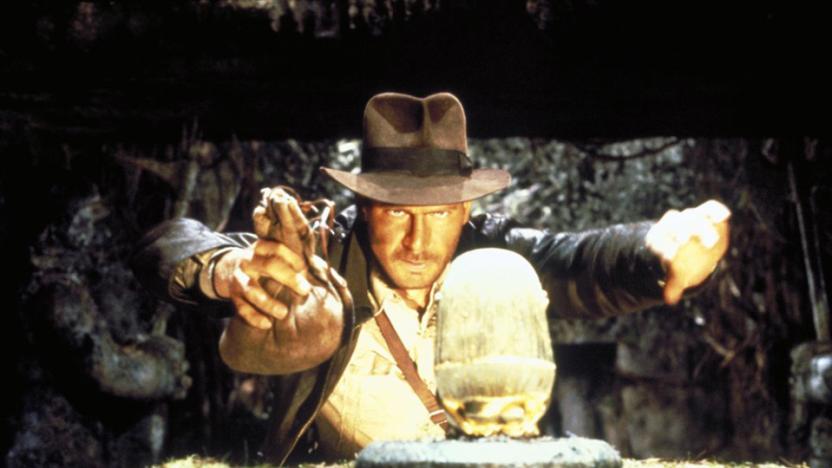
Archaeologists have new tools that make it easy to scan artifacts
A European Union-funded project called "Presious" could make a modern Indiana Jones' tasks easier even if they're operating with tiny budgets. See, the initiative is currently developing a number of software tools they can use to scan artifacts. The first one can be used to scan stone objects and estimate their erosion patterns, while the second one treats scanned fragments like 3D puzzles and pieces them together. Finally, the third tool can fill in gaps in symmetrical objects if some of their pieces couldn't be found.

Ground-penetrating radar reveals huge monument near Stonehenge
Stonehenge is an iconic and mysterious English landmark, but it's not the only place to attract the interest of local archaeologists. Nearly 100 stone monoliths have been discovered at a site called the Durrington Walls, about two miles north-east of Stonehenge. For the average visitor, there's little to see at ground level -- just the grassy remains of a sloping bank. But with ground-penetrating radar, researchers have mapped the area and discovered evidence of up to 90 stones three feet underground. Around 30 remain intact, measuring up to 4.5 meters tall, while fragments of a further 60 lay beside them.
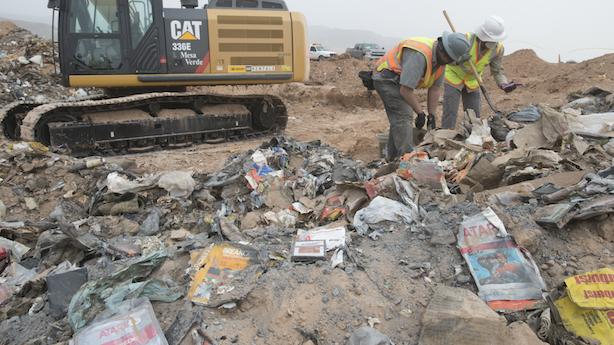
Landfill copy of Atari's Centipede donated to university
University of North Dakota's Special Collections department now houses a cartridge of the Atari 2600 game Centipede, dug up from a landfill in New Mexico last year. Assistant professor of history Bill Caraher participated in the dig and threw down $60 to buy the cartridge on eBay. "While I usually would not condone purchasing archaeological artifacts of any kind, these artifacts are somewhat different because they represent our very recent past," Caraher told the AP. "When I saw that the Smithsonian had received a game and several other major cultural institutions as well, I had to acquire one for UND to commemorate the university's participation in this unusual excavation." The Centipede cartridge marks an important moment in video game history – the crash of the industry in 1983. That year, Atari reportedly dumped truckloads of unsold copies of ET, Asteroids, Missile Command, Centipede and other games in the New Mexico landfill, and in 2014 a documentary team set about excavating the old, dirty games. Microsoft helped finance the excavation and the documentary Atari: Game Over, which explores the 1983 crash and subsequent landfill dig. Atari: Game Over premiered on Xbox in November. Once on eBay, the games sold individually for $50 to $1,500. The Smithsonian Institution in Washington, DC, picked up a copy of ET last year for its video game history collection. The University of North Dakota plans to invite people who participated in the excavation to a showing of Atari: Game Over in the spring, for a discussion of archaeology, media and video games as artifacts.

The Queue: Secondary professions and more
Welcome back to The Queue, the daily Q&A column in which the WoW Insider team answers your questions about the World of Warcraft. Alex Ziebart will be your host today. Happy Monday, all! Enjoy your few days at work until New Year's Eve. Assuming you have a job that gives you a day off for the New Year. I've never had such a thing. I'm pretty sure it's a myth. DavidBaldock asked: With cooking recipes again requiring a variety of ingredients, and with being able to potentially learn the recipe by tasting certain foods, has cooking become more or less interesting as a secondary profession since MoP or Wrath?

Trade your Restored Artifacts for Archaeology Fragments on Draenor
We've reached the point in Warlords of Draenor where many players have hit the level cap and have begun delving into alternative activities such as archaeology. Our time spent in garrison general chat has revealed many players are unaware they don't need to return to Pandaria to trade their Restored Artifacts for Archaeology Fragments. For that, you can visit Ashran. More, the vendors in Ashran allow you to trade your Restored Artifacts for Pandaren, Mogu, and Mantid artifacts, which cannot be done in Pandaria. The Alliance is looking for Grakis in Stormshield. For the Horde, you'll want Srikka in Warspear. Both NPCs are arakkoa near the town's archaeology trainer. Grakis and Srikka are also the NPCs that sell Draenor's treasure maps. If you're having trouble tracking down the last few treasures you need -- or don't want to bother hunting them down unassisted -- make sure you buy those. Each treasure map will run you 200 gold. Of course, you could do that with addons free of charge, so consider these guys the addon-free version.

The Big Picture: digital maps uncover the hidden ruins of Stonehenge
You may already know that Stonehenge is just one part of a larger group of monuments, but digital mapping has made it clear that there's even more to the landscape than meets the eye. The Stonehenge Hidden Landscapes Project has used a mix of geophysical surveys and remote sensing technology to uncover not just 17 hidden ruins, but more details about locations that have already been explored to death. They've revealed a previously unknown early version of the Durrington Walls, for instance. Archaeologists will have to do some old-fashioned digging to know the full extent of what they found, but it's already evident that England's ancient architecture changed dramatically over the centuries.

A beginner's guide to WoW's secondary professions
We've talked about WoW's crafting and gathering professions which only leaves the game's four secondary professions left to discuss. Unlike primary professions, you can take as many secondary professions as you want, so there are no hard choices here: if it's interesting to you, take it, and if not, ignore it. So just what are these secondary professions? Cooking, fishing, first aid, and archaeology. And, we know, these might sound a bit on the dull side -- do you really want to spend your video game time cooking? But whatever you do, don't write secondary professions off as optional or unimportant, because they can definitely come in handy for players of all types. So let's take a look at the secondary professions and just what they can do for you.

EVE Evolved: First impressions of Odyssey
The Odyssey expansion has been live for a couple of days now, but it's already starting to have a massive impact on EVE Online. Traffic through low-security space has increased significantly for the first time in years thanks to explorers hunting data and relic sites, and some players are even hunting asteroid belt NPCs in lowsec for the new security tags. New wars have erupted in nullsec following the redistribution of moon wealth, mining has become a more valuable profession, and the rebalanced battleships feel powerful again. Unfortunately, Odyssey has seen its fair share of problems too. The new jump effect looks spectacular the first few times you see it, but long-term play is reportedly causing motion sickness in some players. Some players have also been objecting to the ice mining changes, and the revamped radial UI menu hasn't done much to fix the game's usability problems. Explorers in low-security space and nullsec are reporting incomes in the billions of ISK per day range thanks to the scan probe changes and new hacking minigame, but not everyone is happy with the new loot-scattering mechanic. In this week's EVE Evolved, I look at the early impact of Odyssey on the EVE Online universe and discover the secrets behind collecting all the valuable loot when hacking.

CCP marks EVE Online: Odyssey launch with trio of new videos
Odyssey, the 19th free content expansion for sci-fi sandbox EVE Online, is now live. Like the EVE expansions that came before it, Odyssey brings a collection of changes, tweaks and major overhauls to EVE's existing universe, among them resource redistribution, deep modifications to the exploration career, a brand-new radial navigation tool, upgrades to player-owned stations, and a redesigned system scanner. To mark the occasion, CCP has released no fewer than three videos covering Odyssey, including the expansion's final launch trailer. Check out all three after the break, and have a look at our Odyssey coverage for in-depth information on everything that's changing.

EVE Evolved: Get ready for Odyssey
With just two days to go until EVE Online's exploration-focused Odyssey expansion goes live, players have been scouring the test server for information that can give them an edge. Some have been practicing moon surveying techniques for the upcoming redistribution of tech 2 minerals, and others are hoping to get rich quick by speculating on battleship price changes. Explorers are kitting out new exploration ships, theorycrafters are working on new setups for rebalanced ships, and pirates are setting up base in lowsec areas that are about to become fertile hunting grounds. Odyssey isn't quite the Apocrypha-level expansion I've been hoping for, but it certainly seems set to shake things up. Changes to moon minerals will throw nullsec into chaos and hopefully ignite some big territorial wars, and battleship buffs may change EVE's popular fleet compositions. The Discovery Scanner Overlay will make exploration much easier for new players to get into, but will also give pirates another tool with which to hunt down explorers. A new co-operative hacking minigame will also make exploration more of a team sport. But how can you make the most of the expansion from day one, and what can you do today to prepare for it? In this week's EVE Evolved, I look at the new exploration system and other changes you can expect when you log in on Tuesday, and what you can do now to make the most of them.








